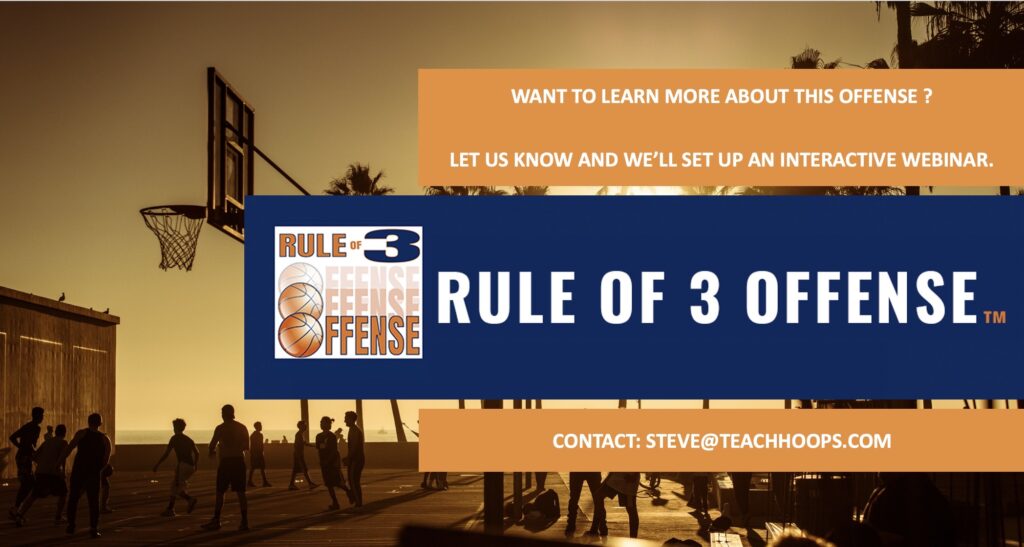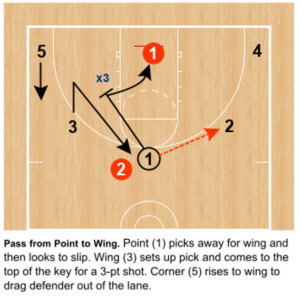The Rule of 3 basketball offense provides coaches with a concise offensive set up to help your team succeed. This offensive approach works against man and zone defenses and makes operating on that side of the floor easier. Some continuity offenses can be difficult to digest, but the Rule of Three basketball offense remains clear with straightforward principles. A key point of emphasis for this basketball offense is the mesh point.
What the Rule of 3 offense does for a basketball coach is provide a pared down approach that highlights the strengths of a given team. The key to any good offense is finding the openings, and this does just that. This offense remains predicated on ball movement, player movement, and spacing to create scoring opportunities.

![]() The Rule of 3 Offense Basketball Mesh Point
The Rule of 3 Offense Basketball Mesh Point
The “Mesh Point” in the Rule of 3 basketball offense remains perhaps the most pivotal part of this scheme. Simply, the mesh point is the place where a screen occurs on the basketball floor. It’s at this juncture that the screen and the cutter need to read their defenders to determine the next progression in the offense.
 The mesh point remains the focal point of the Rule of 3 basketball offense. In the graphic shown here, the mesh point becomes the moment when Player 1 sets a screen for Player 3.
The mesh point remains the focal point of the Rule of 3 basketball offense. In the graphic shown here, the mesh point becomes the moment when Player 1 sets a screen for Player 3.
Both Player 1 and Player 3 see multiple options depending upon how the defenders choose to play this action.
Since Player 3 receives the screen, he gets to read the defenders at the mesh point first. His options include a slice cut, a curl cut, or to cut high.
After Player 3 makes his read at the mesh point, Player 1 follows with his read on the basketball floor. Player 1’s options include a slip to the basket, to screen away for the wing, or pop high after a curl.
The offensive players should look to vary their cut based on the defender. Each offensive player should look to take advantage of the momentary confusion any unexpected movement caused the defense.
Several key fundamentals need reinforcement from basketball coaches when working through mesh point reads. First, drill the proper form for setting screens. Next, drill how to operate off screen as the cutter. Finally, drill how to “slip” a screen. When preparing to read the defense, teach your players which cut to use. Stress the value of varying cuts to create confusion in the defense.





